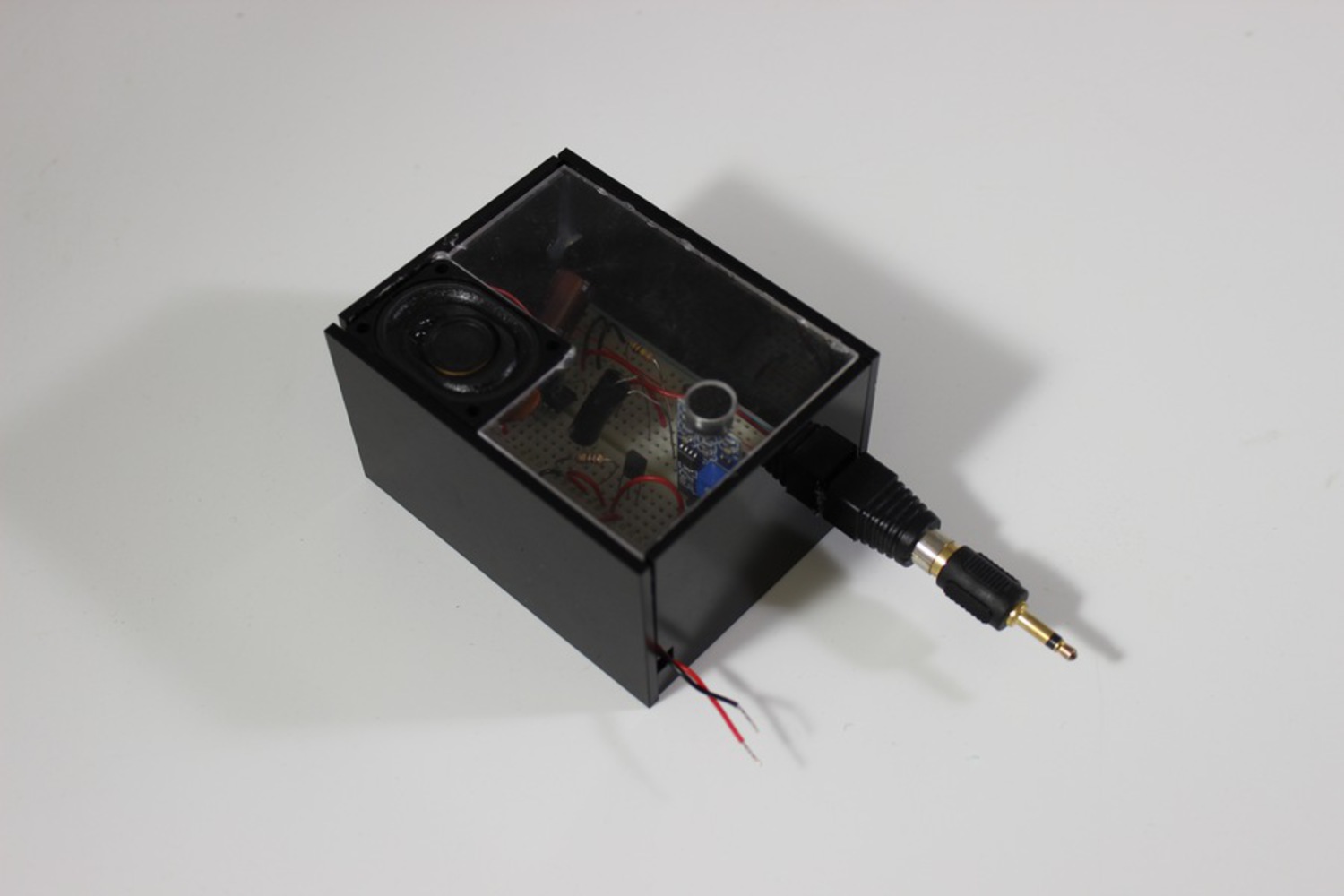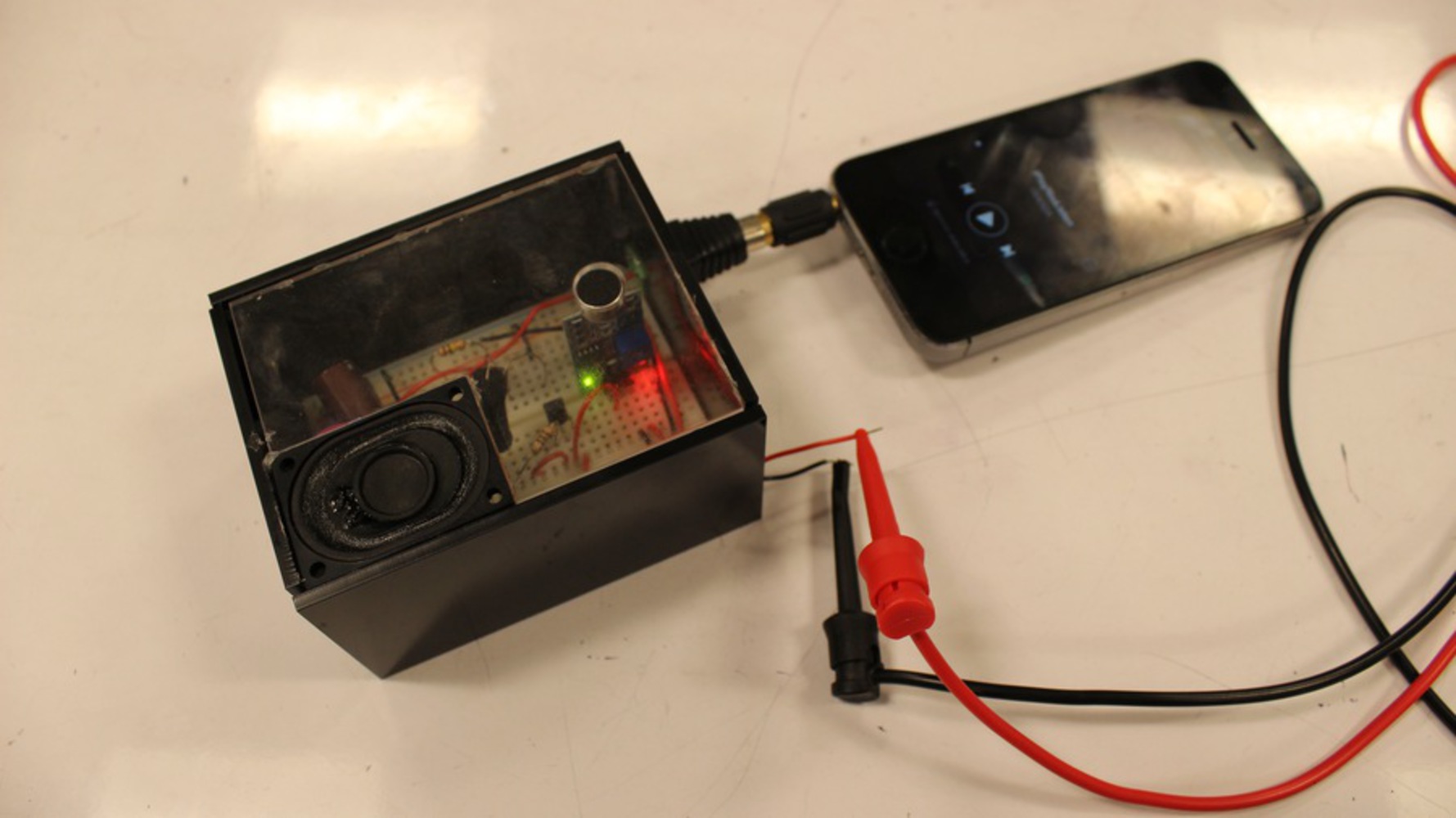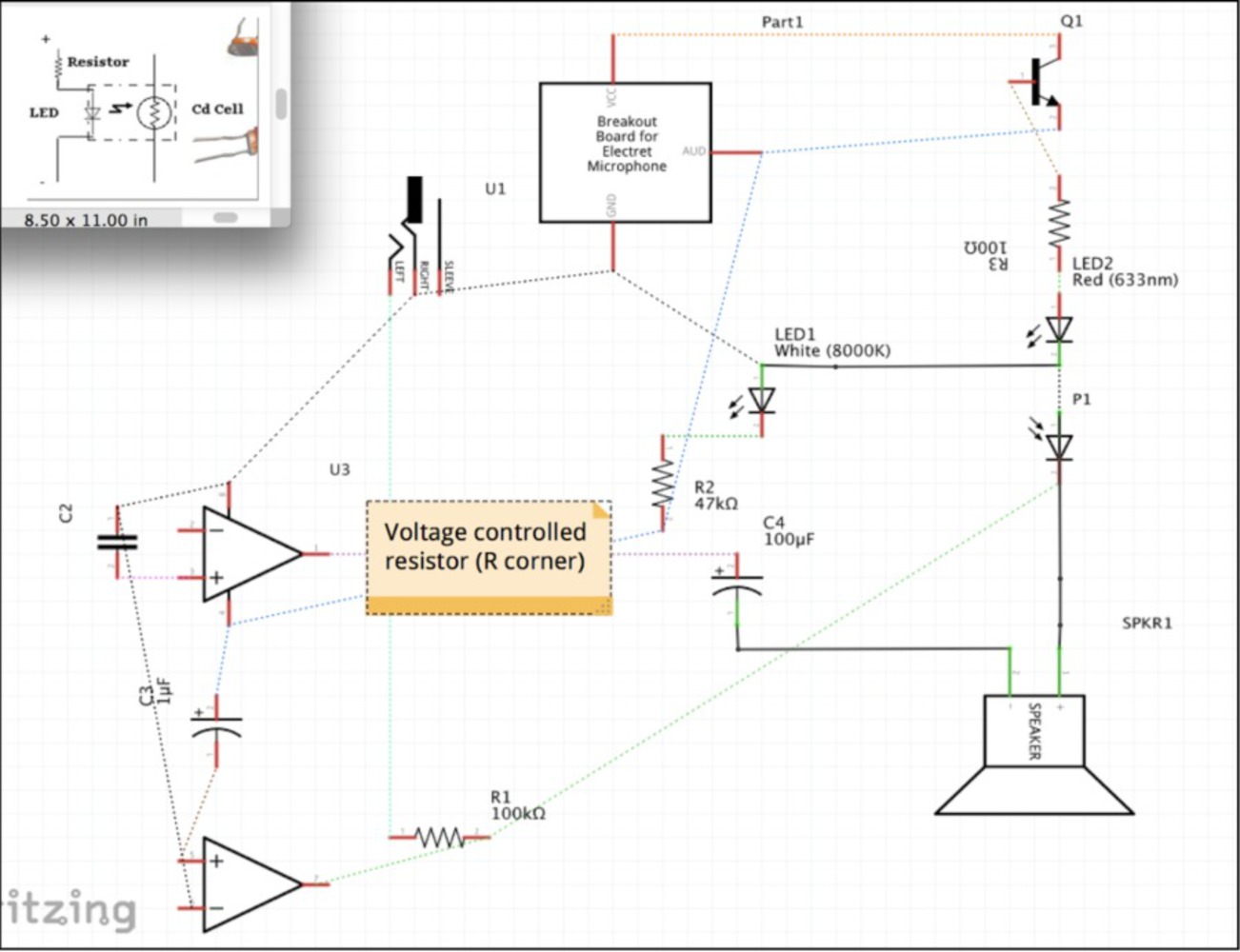This was the first project that was built by Vera Schulz and Treat Swarstad was for Garth Zeglin's Physical Computing class back in the fall of 2015.
Narrative:
Our idea was to alter a set of earphones so that they would become receptive to outside noises and then, automatically adjust the sound level output based on how loud or quiet it would be outside. Our device worked better than we expected, but there were some aspects of the circuit, like the speaker that could have been improved. Our idea addresses the needs and safety of individuals who enjoy listening to music while doing active things, as well as those who would like to be more aware of their surroundings. Our project is important because it allows those who exercise in close proximity to traffic to be aware of their surroundings but is also useful for someone working at their desk who wants to know when someone is approaching them. This ambient sound sensor is meant for any utilizer who wants to enjoy music, but also be aware of one’s surroundings. This product is meant to assist in the creation of a safe environment for both the user as well as those in close proximity to the user.


